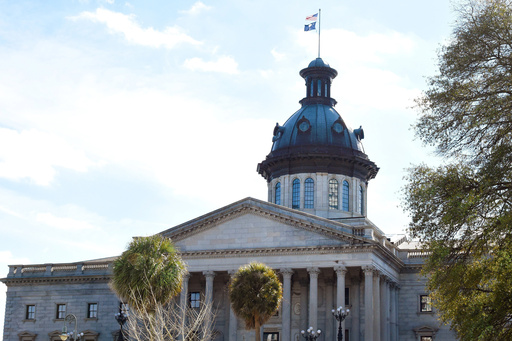WASHINGTON (AP) — South Carolina will hold runoff elections on Tuesday to decide a handful of races in which no candidate received a majority of the vote in the primary held just two weeks earlier.
In the 3rd Congressional District, a candidate backed by former President Donald Trump faces off against the preferred candidate of Republican Gov. Henry McMaster in a contest that will likely determine who will succeed retiring GOP U.S. Rep. Jeff Duncan.
Voters in the June 11 primary winnowed the crowded Republican field down to pastor Mark Burns and nurse practitioner Sheri Biggs. Burns, an Army veteran, has Trump’s endorsement and was the top vote-getter in the primary, with about 33% of the vote. Biggs is an officer with the Mississippi Air National Guard and placed second in the primary with about 29%.
Biggs has McMasters’ backing while also prominently featuring photos of herself with Trump on her campaign website. Biggs has far outraised Burns in individual campaign contributions for the cycle, but Burns had almost triple the campaign cash Biggs had available heading into the primary, thanks to $750,000 in loans the candidate secured from a Missouri-based bank. Burns also reports carrying an additional $100,000 in loans from a previous congressional run.
The winner will face Democratic nominee Byron Best, the manager of a paint store in Greenwood. Both Burns and Biggs would be heavily favored in November in the safe Republican district. Trump won the area with 68% of the vote in 2020 and 67% in 2016. Duncan ran unopposed in 2022.
Also on Tuesday’s ballot are eight state Senate and four state House runoffs. All 170 state legislative seats are up for election in November. Republicans enjoy lopsided majorities in both chambers.
Here’s a look at what to expect on Tuesday:
PRIMARY RUNOFF ELECTION DAY
South Carolina’s primary runoff election will be held Tuesday. Polls close at 7 p.m. ET.
WHAT’S ON THE BALLOT
The Associated Press will provide vote results and declare winners in 13 runoff elections, including one U.S. House, eight state Senate and four state House contests.
WHO GETS TO VOTE
Registered voters may participate in a partisan primary runoff election if they voted in the same party’s primary on June 11 or if they did not vote in the primary. In other words, Republican primary voters can’t vote in a Democratic runoff or vice versa.
DECISION NOTES
The 3rd Congressional District covers part or all of 11 counties, of which Anderson and Pickens tend to contribute the most votes. Trump carried both counties in the presidential primary with 69% and 68% of the vote, respectively. In the competitive 2018 Republican primary for governor, McMaster narrowly lost to Pickens but won a plurality of the vote in Anderson. He also won five of the counties in the southern half of the district by double-digit margins.
The AP does not make projections and will declare a winner only when it’s determined there is no scenario that would allow the trailing candidates to close the gap. If a race has not been called, the AP will continue to cover any newsworthy developments, such as candidate concessions or declarations of victory. In doing so, the AP will make clear that it has not yet declared a winner and explain why.
In South Carolina, recounts are automatic if the margin between the winning and losing candidates is not more than 1% of the total vote. The AP may declare a winner in a race that is eligible for a recount if it can determine the lead is too large for a recount or legal challenge to change the outcome.
WHAT DO TURNOUT AND ADVANCE VOTE LOOK LIKE?
As of June 5, there were about 3.3 million registered voters in South Carolina. The state does not register voters by party.
In the June 11 primary, turnout was 14% of registered voters. About 32% of votes were cast before primary day, according to data from the South Carolina Election Commission.
State data also showed that, as of Friday, about 16,000 ballots had been cast before Tuesday’s runoff, almost all of them through in-person early voting. Of the nearly 500 votes cast by mail, about 54% were in Democratic contests and 46% in Republican contests. The state has not provided a breakdown of in-person early voting by party.
HOW LONG DOES VOTE-COUNTING USUALLY TAKE?
In the June 11 primary, the AP first reported results at 7:18 p.m. ET, or 18 minutes after polls closed. The election night tabulation ended at 10:53 p.m. ET with 99.9% of total votes counted.
ARE WE THERE YET?
As of Tuesday, there will be 133 days until the November general election.
___
Follow the AP’s coverage of the 2024 election at https://apnews.com/hub/election-2024.


